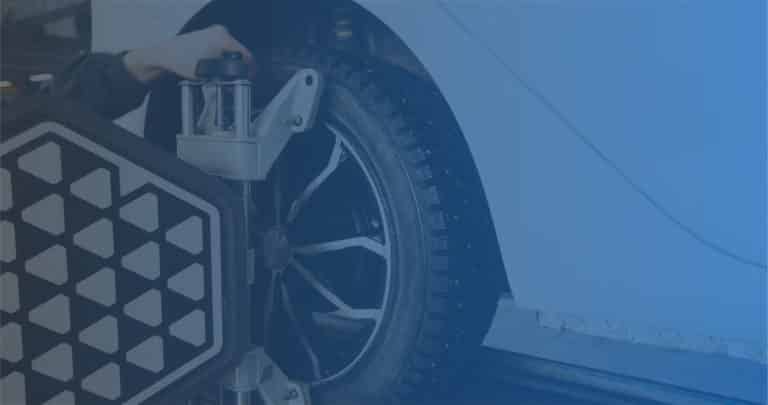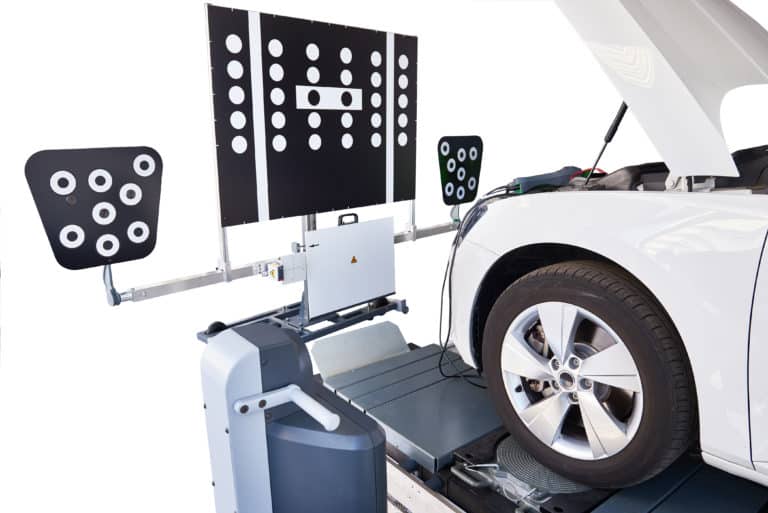Cruise control systems, once considered a luxury, are now standard in most vehicles. When these systems stop functioning, it can signal a minor electrical issue or a more complex advanced driver-assistance system (ADAS)-related fault. What are the most common reasons for cruise control not working? In this post, we’ll explore how cruise control systems work—both traditional and adaptive—and identify the most common reasons they fail. We will also go over quick visual checks and do-it-yourself (DIY)-diagnostics, as well as more advanced procedures for shops equipped with scan tools and calibration systems.
How Cruise Control Works (Standard vs. Adaptive)
A clear understanding of cruise control operation helps isolate the source of problems when these systems fail.
Traditional cruise control operates through a basic combination of electrical and mechanical parts. When activated, the system manages throttle input to maintain a constant speed without any driver input on the throttle.
Key components in these setups include:
- A throttle actuator
- Control module
- Brake and clutch pedal sensors
- Dashboard or steering wheel switches
Traditional cruise control first became popular in the mid-20th century as a convenience feature in automobiles. It allowed drivers to maintain a consistent speed over long distances, reducing fatigue during highway travel. However, these systems required the driver to remain attentive and manually disengage the cruise control using the brakes or clutch in situations requiring a change in speed.
More advanced systems, such as Adaptive Cruise Control (ACC), integrate with ADAS technologies. These use sensors to monitor surrounding traffic and adjust speed accordingly.
Technologies in ACC systems include:
- Forward-facing radar
- Cameras or lidar
- Control units connected to vehicle networks
By continuously analyzing nearby traffic, adaptive cruise control modifies vehicle speed to match real-time conditions, which introduces additional complexity into system diagnostics.
Top Reasons Cruise Control Stops Working
When a cruise control system fails, the underlying cause often falls into one of four categories: electrical problems, mechanical failures, software malfunctions, or ADAS-related faults.
Electrical Problems
Electrical problems are among the most common causes of cruise control failure. Modern cruise control systems rely on a network of electrical components—including sensors, switches, and wiring—to function properly. Any disruption or fault in these components can prevent the system from working.
Here are some common issues:
- Blown fuses or defective relays disrupting power flow
- Damaged or corroded wiring, often caused by impact or poor aftermarket installations
- Malfunctioning brake or clutch switches that prevent system engagement
- Inconsistent voltage due to grounding issues
Mechanical Failures
Mechanical issues typically come from wear and tear, poor maintenance, or defective components. These failures can manifest in several ways, such as grinding noises, unusual vibrations, or complete system breakdown.
Common culprits include:
- Throttle linkage misalignment in older cable-driven systems
- Faulty or incorrectly positioned brake and clutch pedal sensors
- Worn-out switches or control buttons
- Vehicle speed sensors or wheel speed sensors
Software Malfunctions
These types of failures can lead to erratic system behavior, unexpected shutdowns, or loss of functionality.
Here are some typical occurrences:
- Electronic Control Unit (ECU) faults triggered by weak battery voltage or electrical spikes
- Uninstalled or outdated software updates from the manufacturer
- System recalls affecting cruise functionality
ADAS-Related Faults
In ACC systems, ADAS (Advanced Driver-Assistance Systems) integration can sometimes lead to cruise control malfunctions. For example, a malfunctioning forward collision warning system can inadvertently disable the cruise control, as the two systems often work together.
- Misaligned radar modules from minor collisions or improper sensor replacement
- Camera blockage due to debris, window tint, or mounting errors
- Incomplete calibration following windshield replacement or bumper work
With all of these factors in mind, how can the actual cause be found? We’ll get into how to test a system in the next section.
How To Test a Cruise Control System
Testing a cruise control system requires a systematic approach to identify the issues. These steps are a great way to begin troubleshooting:
Initial Checks
- Confirm activation of the cruise control indicator light
- Test the brake lights to verify the brake switch works
Visual Inspection
- Examine wiring and connectors for corrosion or damage
- Check alignment and function of pedal-mounted sensors
- Inspect buttons or switches on the steering wheel
Road Evaluation
- Attempt to turn on cruise control at standard highway speeds
- Note any dashboard alerts, such as “Cruise Not Available” or “Sensor Blocked”
Diagnostic Tools
- Connect an OBD-II scanner to detect stored fault codes
- For adaptive systems, use brand-specific diagnostic software to access radar, camera, and communication data
Some issues may not trigger visible warning lights but can still log diagnostic codes. Scan tools are often required to locate these hidden faults.
How To Fix a Broken Cruise Control System
Repair procedures vary based on the type and complexity of the failure. Simple issues may be resolved in minutes, while ADAS-related faults often demand specialized tooling and alignment procedures.
Electrical and Mechanical Repairs
These are fairly straightforward if the problem lies with accessible components like switches, fuses, or actuators. For example, a blown fuse can be replaced using basic tools, while a faulty cruise control switch may require disassembly of the steering column. The vehicle’s battery should always be disconnected before working on electrical components to prevent accidental shorts or damage.
Sensor Repairs and Calibration
This includes addressing faulty sensors that may affect the performance of critical systems such as anti-lock brakes, engine management, or ACC. Diagnosing sensor issues often requires specialized diagnostic tools to read error codes and monitor real-time data. Once identified, faulty sensors can typically be replaced, followed by calibration to ensure accurate readings and proper integration with the vehicle’s systems.
Calibration may involve specific software and adherence to manufacturer position statements to maintain system reliability and safety.
Why is ADAS Calibration so Important for Cruise Control Fixes
ADAS calibration plays a critical role in cruise control performance. Without proper alignment, even functional systems may produce inaccurate and potentially dangerous results.
When calibration is skipped or done incorrectly:
- Sensors may misjudge distance and cause improper braking
- ACC may disengage unexpectedly
- Vehicles may struggle to maintain lane position or safe following distances
In adaptive systems, front radar modules must point forward with exact angular alignment. A deviation of just a few degrees can shift the sensor’s focal point enough to render data unusable.
Static calibration for these types of systems requires the vehicle to remain stationary in a controlled environment, often in a calibration bay equipped with specialized targets and tools. These targets are carefully positioned relative to the vehicle’s sensors for proper alignment and functionality.
Shops that fail to calibrate after repairs may introduce risks to both vehicle operators and technicians. This is why repair centers increasingly rely on structured calibration services. Shops must use OEM-compliant equipment and implement training programs to perform accurate and reliable sensor calibrations.
Learn More About ADAS Sensor Calibration or Open Your Own Calibration Center
As features like ACC become standard, the margin for error in repairs, diagnostics, and calibrations narrows significantly. What once was a basic electrical fix may now involve communication networks, sensor alignment, and compliance with OEM safety protocols. This growing complexity highlights the need for both consumers and professionals to view cruise control not as an isolated feature, but as part of a vehicle’s integrated safety ecosystem. It also reinforces the value of accurate diagnostics, proper tooling, and ongoing technician training in delivering safe and reliable repairs. Car ADAS Solutions specializes in helping businesses launch and expand ADAS calibration services with a complete turnkey solution. From designing facilities and selecting OEM-compliant equipment to training technicians and supporting daily operations, Car ADAS Solutions helps shops become fully operational in as little as 45 days. Contact us today to learn more.







